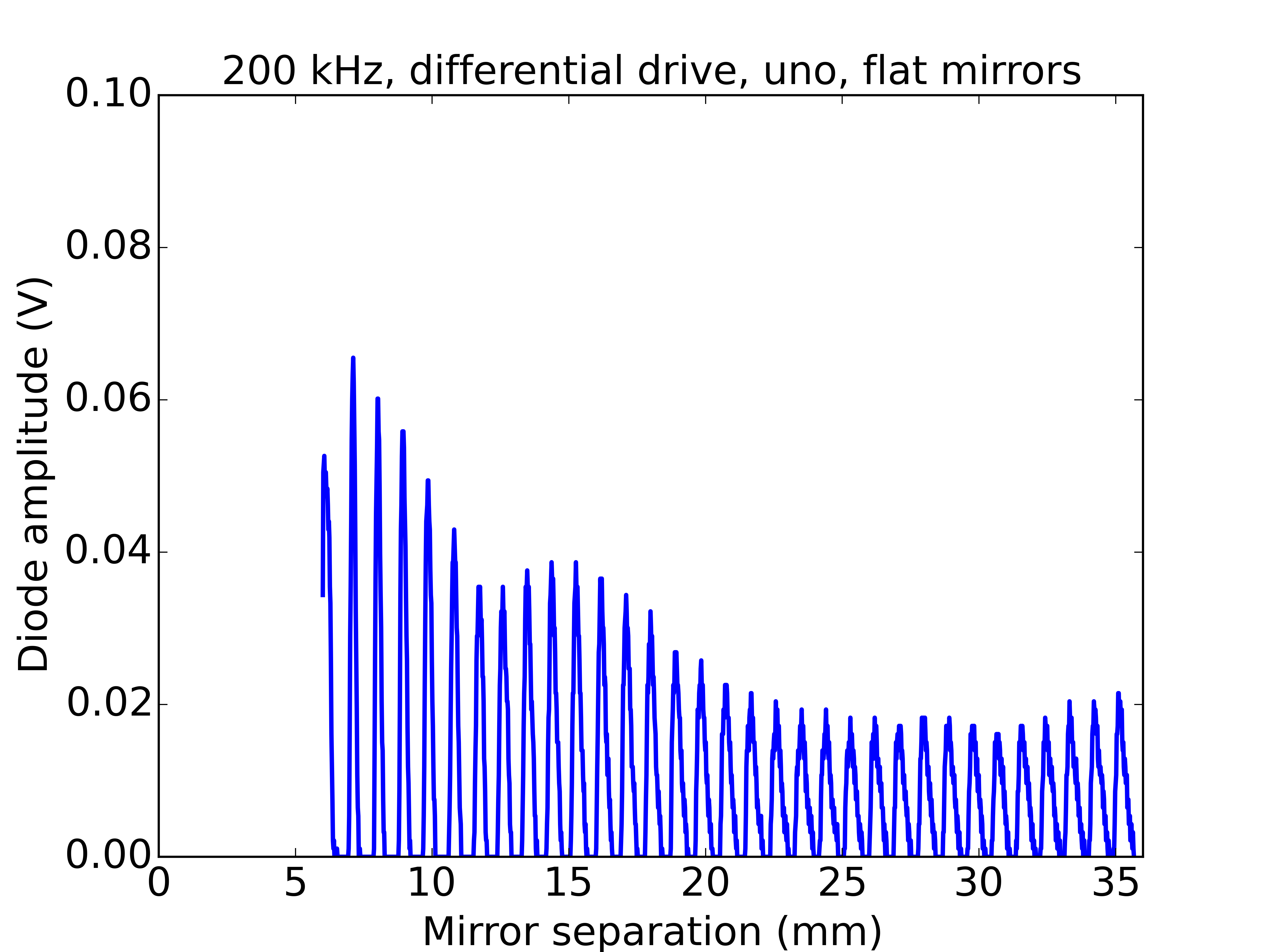I was keen to see more fringes, mainly because it will help with future measurements e.g. of the speed of sound. Optical Fabry-Perots may operate at about the 100,000 order, and therein lies their strength as spectroscopy tools, but with 40 kHz ultrasound I was stuck at about the 5th order! So I took the plunge and bought some transducers that would push up my ultrasound frequency. I found some 200 kHz transceiver units at reasonable cost and installed them in the setup, starting with planar mirrors.
Here is one of the first datasets, showing more than 30 fringes over the travel range:

For a number of reasons the signal has gone dropped to 10's of mV, so one of my next steps will be to build a small amplifier for the receiver. Otherwise, I am pretty happy with the upgrade. Once I have more signal, it will be possible to push the Finesse up, if desired.
 Andrew Ferguson
Andrew Ferguson
Discussions
Become a Hackaday.io Member
Create an account to leave a comment. Already have an account? Log In.